XRF test results for two de Buyer Pans, Made in France (sent in by a reader in Canada)
This is an ad-free article.
We are publishing this article as ad-free to make it easier for you to read. If you would like to support our independent consumer goods testing by contributing (which will also help us keep our more widely-read articles ad-free!), click here. Thank you!
For those new to the Lead Safe Mama website:
Tamara Rubin is a multiple-federal-award-winning independent advocate for childhood Lead poisoning prevention and consumer goods safety, and a documentary filmmaker. She is also a mother of Lead-poisoned children (two of her sons were acutely Lead-poisoned in 2005).
- Tamara owns and runs Lead Safe Mama, LLC — a community collaborative woman-owned small business for childhood Lead poisoning prevention and consumer goods safety.
- Since 2009, Tamara has been using XRF technology (a scientific testing method) using the exact instrumentation employed by the U.S. Consumer Product Safety Commission to test consumer goods for toxicants (specifically heavy metals — including Lead, Cadmium, Mercury, Antimony, and Arsenic).
- Since July of 2022, the work of Lead Safe Mama, LLC has been responsible for five product recalls (FDA and CPSC).
- All test results reported on this website are science-based, accurate, and replicable.
- Items that Lead Safe Mama, LLC reports on are tested multiple times to confirm the results published (for each component tested).
- Tamara’s work was featured in Consumer Reports Magazine in February 2023 (March 2023 print edition) and The Guardian in November 2023.
Published: December 18, 2023
Hey Lead Safe Mama friends, I am doing my best to catch up with reporting on consumer goods XRF testing done earlier this year! To make this go more quickly (so the people who sent in these items for testing — and the rest of the Lead Safe Mama community — will have these test results after months of being very patient!), I am going to focus for the next couple of days on just publishing the test results (without any of the customary additional specific information), and will update the articles with additional information once I am all caught-up with uploading results.
As background for each of these articles, I wanted to readers to have the the following context:
- All U.S. federal agencies agree there is no safe level of Lead exposure for human beings.
- There is currently no federal regulatory limit for total Lead content in most consumer goods — UNLESS they are items explicitly “intended for use by children.”
- Officially, dishware and kitchenware are not considered to be “items intended for use by children” (!) — and consequently, there is currently no regulatory limit for total Lead content, as detectable by an XRF instrument, in these items. (!)
- For context: According to U.S. federal regulations, any item made specifically “for use by children” must not test positive for Lead at levels above 90 ppm Lead in the paint, glaze, or coating, and also must not test positive for Lead at levels above 100 ppm Lead in the substrate (base material).
- The instrumentation Lead Safe Mama, LLC uses is the same instrumentation used by the United States Consumer Product Safety Commission to screen consumer goods for toxicants (including Lead, Cadmium, Mercury, Antimony, Arsenic, etc.)
- There is no current U.S. federal regulation specifying any total Cadmium-content limit for most consumer goods.
- The two current strictest regulatory standards for Cadmium content are the State of Washington’s regulatory limit (40 ppm, total content), and the Country of Demark total limit (75 ppm total content).
- Any item that tests below 90 ppm Lead in all components is considered (by Lead Safe Mama, LLC) “safe by all standards.”
- Any item that tests below 40 ppm Cadmium in all components is considered (by Lead Safe Mama, LLC) “safe by all standards.”
- We present this information to you (Lead Safe Mama readership and our greater community) so you can make informed decisions about using products you already own or may be evaluating for purchase.
- For greater context about the “WHY” behind what we do here, click here.
- To learn more about sending an item in to Lead Safe Mama, LLC for testing (as part of the collaborative work we do with our community), click here.
- To read more about the testing methodology used by Lead Safe Mama, LLC, click here.
- To read more about Lead Safe Mama, LLC’s business model, click here.
- To make a contribution in support of Lead Safe Mama, LLC’s work (or to support our work in other ways), click here.
 In reporting the test results for the two pans tested, I am distinguishing them (left to right based on the image above) as the older/ used pan (left) and the newer/ shinier/ silver-colored pan (right).
In reporting the test results for the two pans tested, I am distinguishing them (left to right based on the image above) as the older/ used pan (left) and the newer/ shinier/ silver-colored pan (right).
Reading #1) Shiny Silver pan — Food Surface Reading
- Lead (Pb): non-detect
- Cadmium (Cd): non-detect
- Mercury (Hg): non-detect
- Arsenic (As): non-detect
- Iron (Fe): 996,000 +/- 1,600 ppm
- Manganese (Mn): 3,336 +/- 423 ppm
- No other metals were detected in consumer goods/ test all mode.
Reading #2) Older pan — Food Surface Reading
- Lead (Pb): non-detect
- Cadmium (Cd): non-detect
- Mercury (Hg): non-detect
- Arsenic (As): non-detect
- Iron (Fe): 996,900 +/- 1,700 ppm
- Manganese (Mn): 2,369 +/- 416 ppm
- No other metals were detected in consumer goods/ test all mode.
Reading #3) Newer (Shiny) pan — Handle Reading (coated metal)
- Lead (Pb): non-detect
- Cadmium (Cd): non-detect
- Mercury (Hg): non-detect
- Arsenic (As): non-detect
- Titanium (Ti): 123,100 +/- 3,900 ppm
- Vanadium (V): 30,200 +/- 1,700 ppm
- Chromium (Cr); 3,328 +/- 675 ppm
- Iron (Fe): 801,000 +/- 64,000 ppm
- Manganese (Mn): 8,099 +/- 1,043 ppm
Reading #4) Older pan — Handle Reading (coated metal)
- Lead (Pb): non-detect
- Cadmium (Cd): non-detect
- Mercury (Hg): non-detect
- Arsenic (As): non-detect
- Titanium (Ti): 95,900 +/- 2,600 ppm
- Vanadium (V): 22,500 +/- 1,400 ppm
- Chromium (Cr); 2,306 +/- 530 ppm
- Iron (Fe): 844,500 +/- 3,400 ppm
- Manganese (Mn): 7,193 +/- 771 ppm
Reading #5) Newer (Shiny) pan — Handle, Attachment Points/ Rivets Reading (outside of food surface)
- Lead (Pb): non-detect
- Cadmium (Cd): non-detect
- Mercury (Hg): non-detect
- Arsenic (As): non-detect
- Titanium (Ti): 16,700 +/- 1,200 ppm
- Vanadium (V): 3,857 +/- 587 ppm
- Chromium (Cr); 664 +/- 241 ppm
- Iron (Fe): 968,900 +/- 2,100 ppm
- Manganese (Mn): 4,351 +/- 536 ppm
Reading #6) Older pan — Handle, Attachment Points/ Rivets Reading (outside of food surface)
- Lead (Pb): non-detect
- Cadmium (Cd): non-detect
- Mercury (Hg): non-detect
- Arsenic (As): non-detect
- Titanium (Ti): 22,000 +/- 2,400 ppm
- Vanadium (V): 3,781 +/- 1,089 ppm
- Chromium (Cr): 801 +/- 459 ppm
- Iron (Fe): 963,600 +/- 4,300 ppm
- Manganese (Mn): 4,281 +/- 986 ppm
Reading #7) Newer (Shiny) pan — Handle, Silicone Logo Reading
- Lead (Pb): non-detect
- Cadmium (Cd): 21 +/- 7 ppm*
- Mercury (Hg): non-detect
- Arsenic (As): non-detect
- Titanium (Ti): 12,500 +/- 1,800 ppm
- Iron (Fe): 1,503 +/- 189 ppm
- Zinc (Zn): 212 +/- 31 ppm
- Niobium (Nb): 589 +/- 28 ppm
- Balance: 985,000 ppm
Reading #8) Older pan — Handle, Silicone Logo Reading
- Lead (Pb): non-detect
- Cadmium (Cd): 19 +/- 6 ppm*
- Antimony (Sb): 31 +/- 13 ppm*
- Mercury (Hg): non-detect
- Arsenic (As): non-detect
- Titanium (Ti): 15,900 +/- 1,600 ppm
- Zinc (Zn): 212 +/- 28 ppm
- Niobium (Nb): 513 +/- 27 ppm
- Balance: 983,200 ppm
Reading #9) Newer (Shiny) pan — Handle, Attachment Points/ Rivets Reading (inside of food surface)
- Lead (Pb): non-detect
- Cadmium (Cd): non-detect
- Mercury (Hg): non-detect
- Arsenic (As): non-detect
- Titanium (Ti): non-detect
- Vanadium (V): non-detect
- Chromium (Cr); 488 +/- 304 ppm
- Iron (Fe): 995,400 +/- 3,600 ppm
- Manganese (Mn): 3,855 +/- 828 ppm
Reading #10) Older pan — Handle, Attachment Points/ Rivets Reading (inside of food surface)
- Lead (Pb): non-detect
- Cadmium (Cd): non-detect
- Mercury (Hg): non-detect
- Arsenic (As): non-detect
- Titanium (Ti): non-detect
- Vanadium (V): non-detect
- Chromium (Cr); 382 +/- 244 ppm
- Iron (Fe): 993,200 +/- 2,500 ppm
- Manganese (Mn): 2,982 +/- 640 ppm
- Copper (Cu): 778 +/- 386 ppm
- Zinc (Zn): 2,436 +/- 471 ppm
*The Cadmium and Antimony levels found are “safe by all standards” and not concerning at all given they were only found in the yellow silicone logo on the handle of the pans.
Tamara Elise Rubin
Owner — Lead Safe Mama, LLC
~ End ~
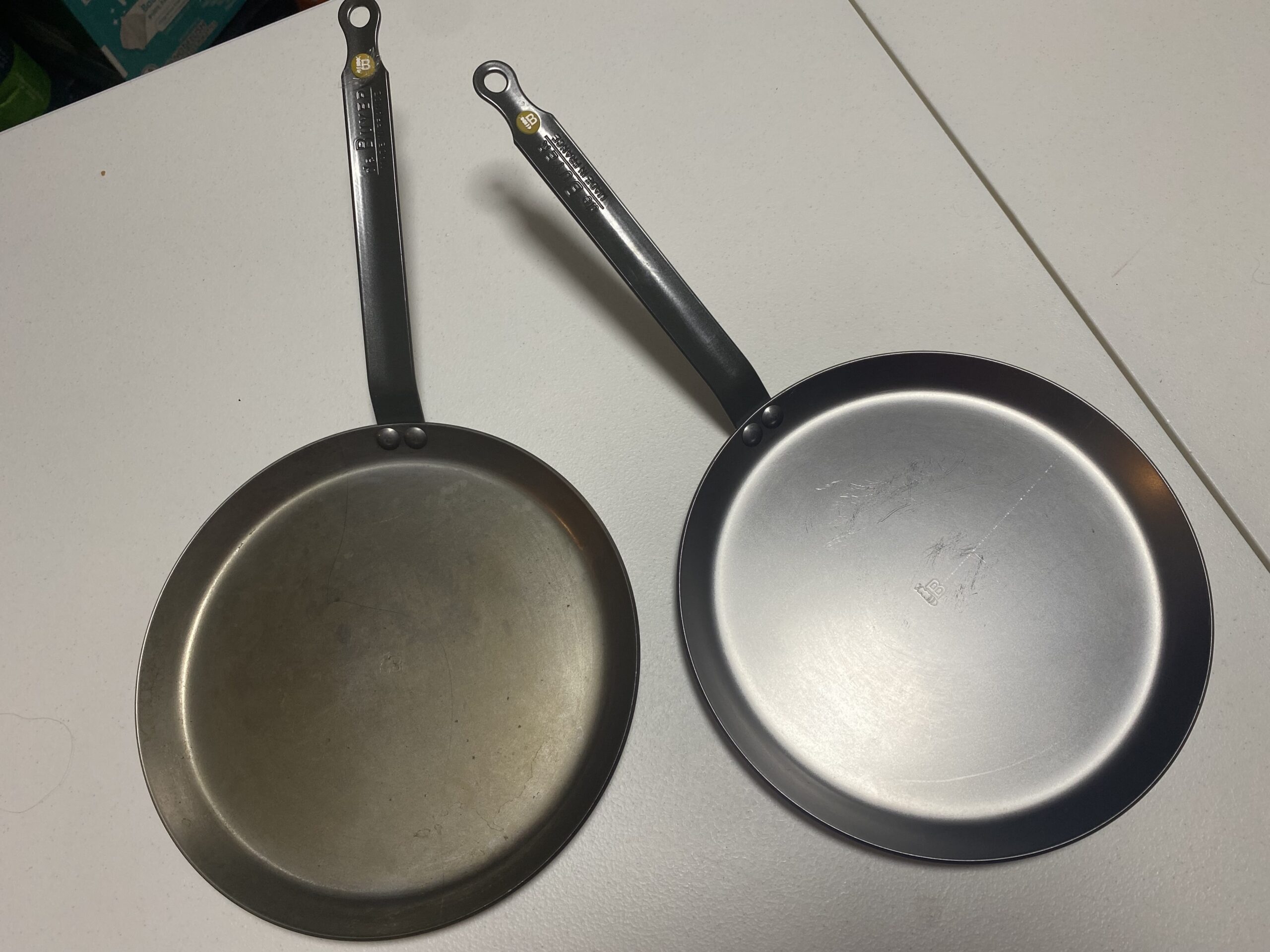
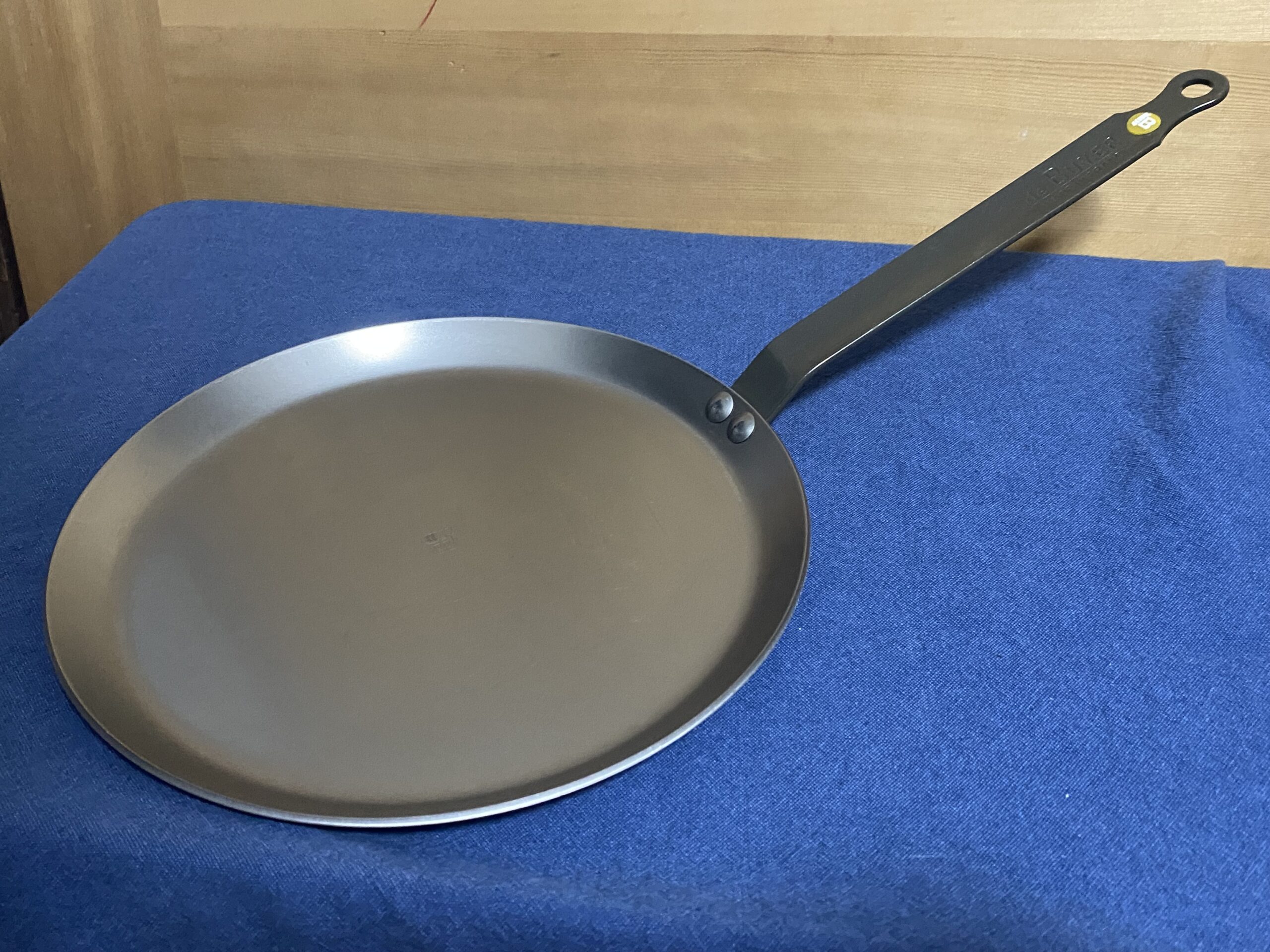
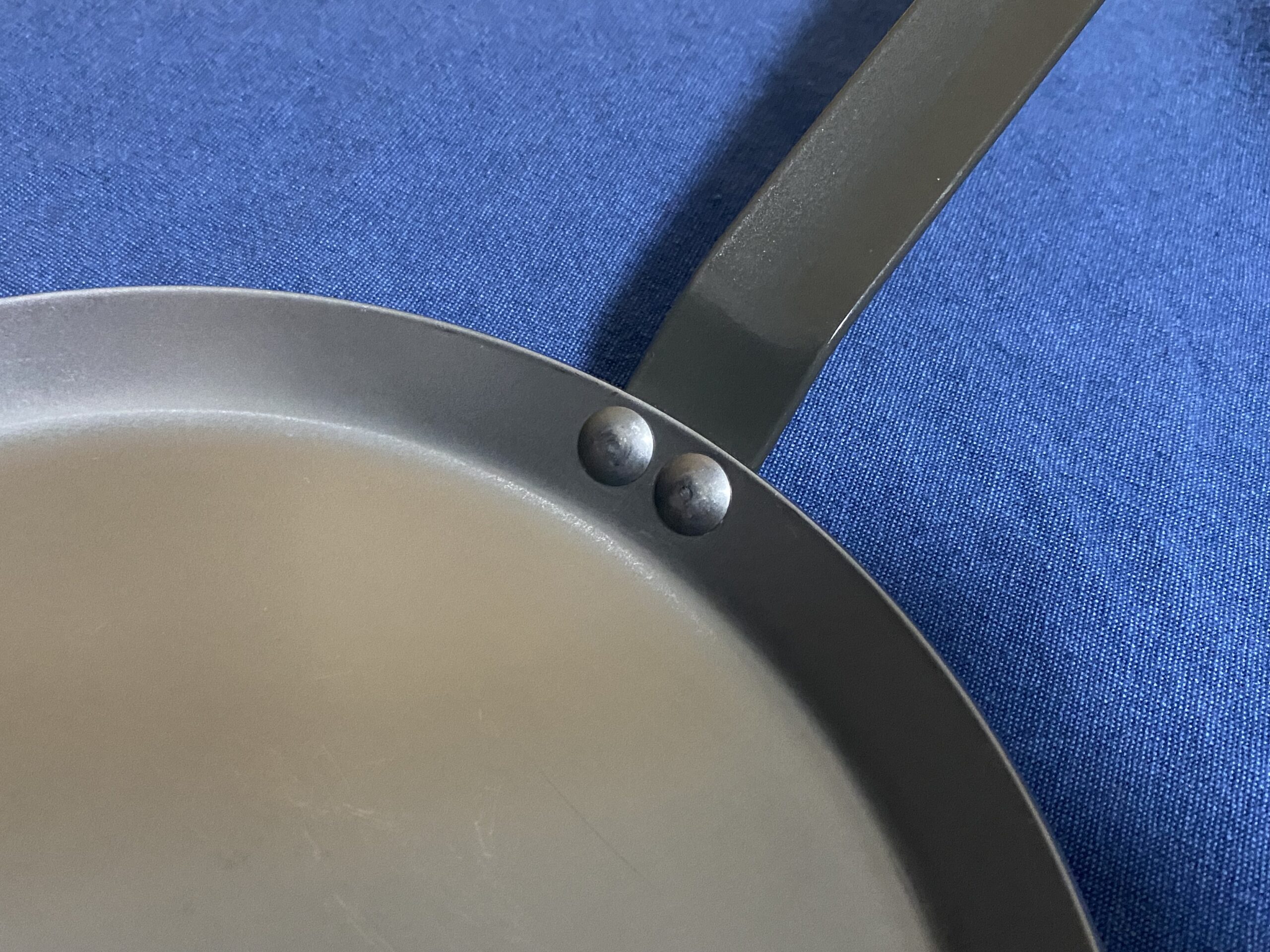
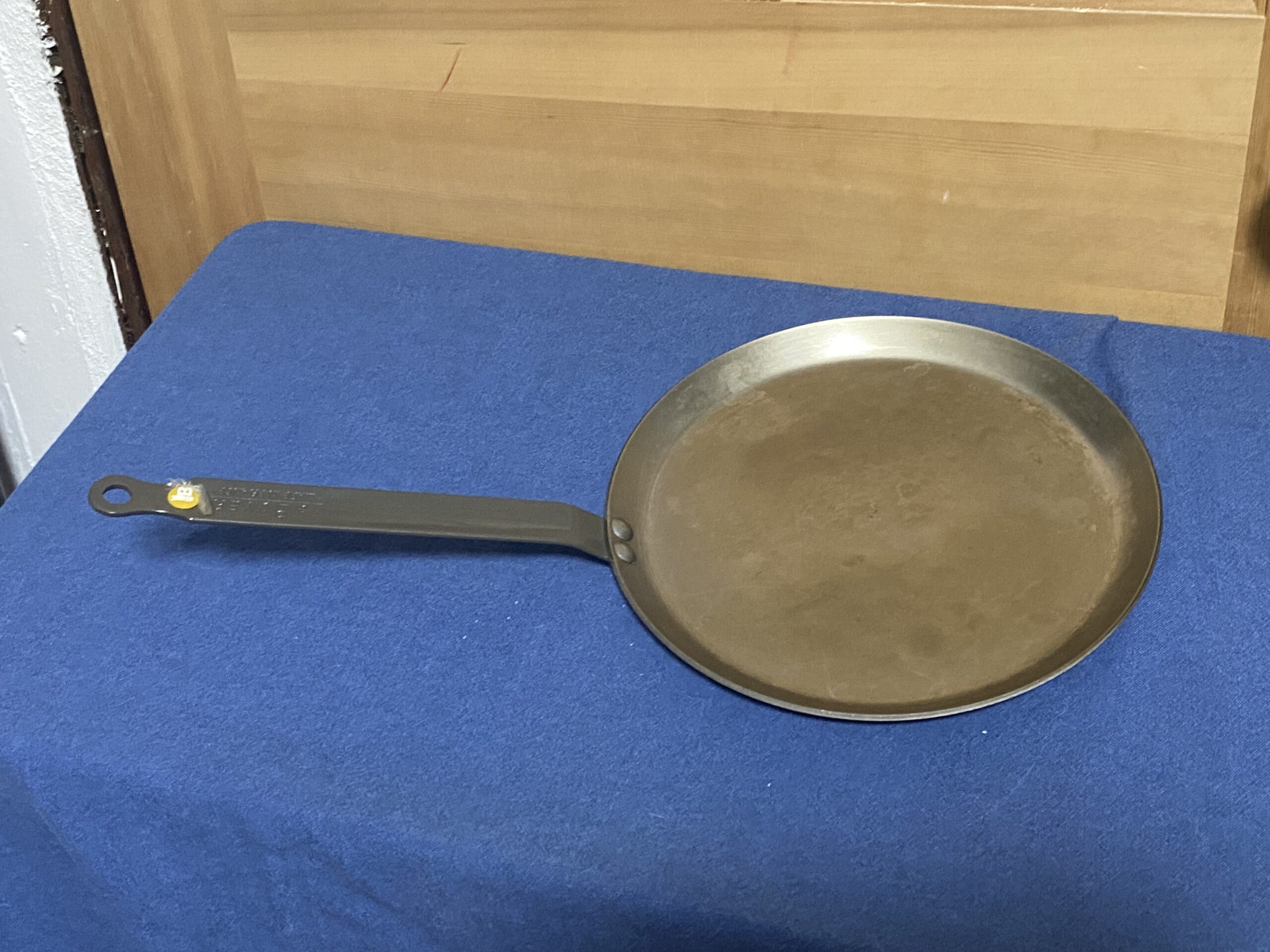
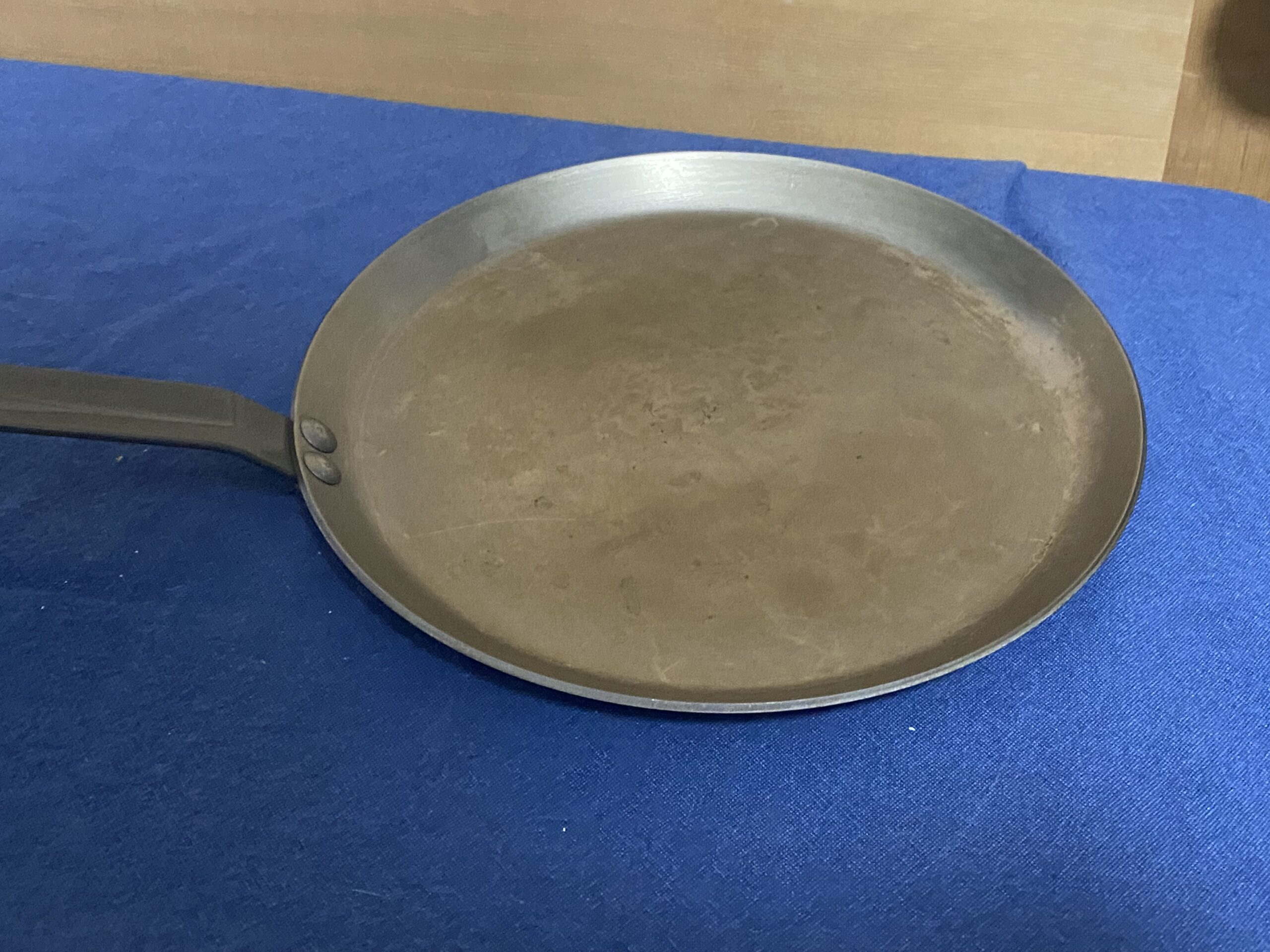

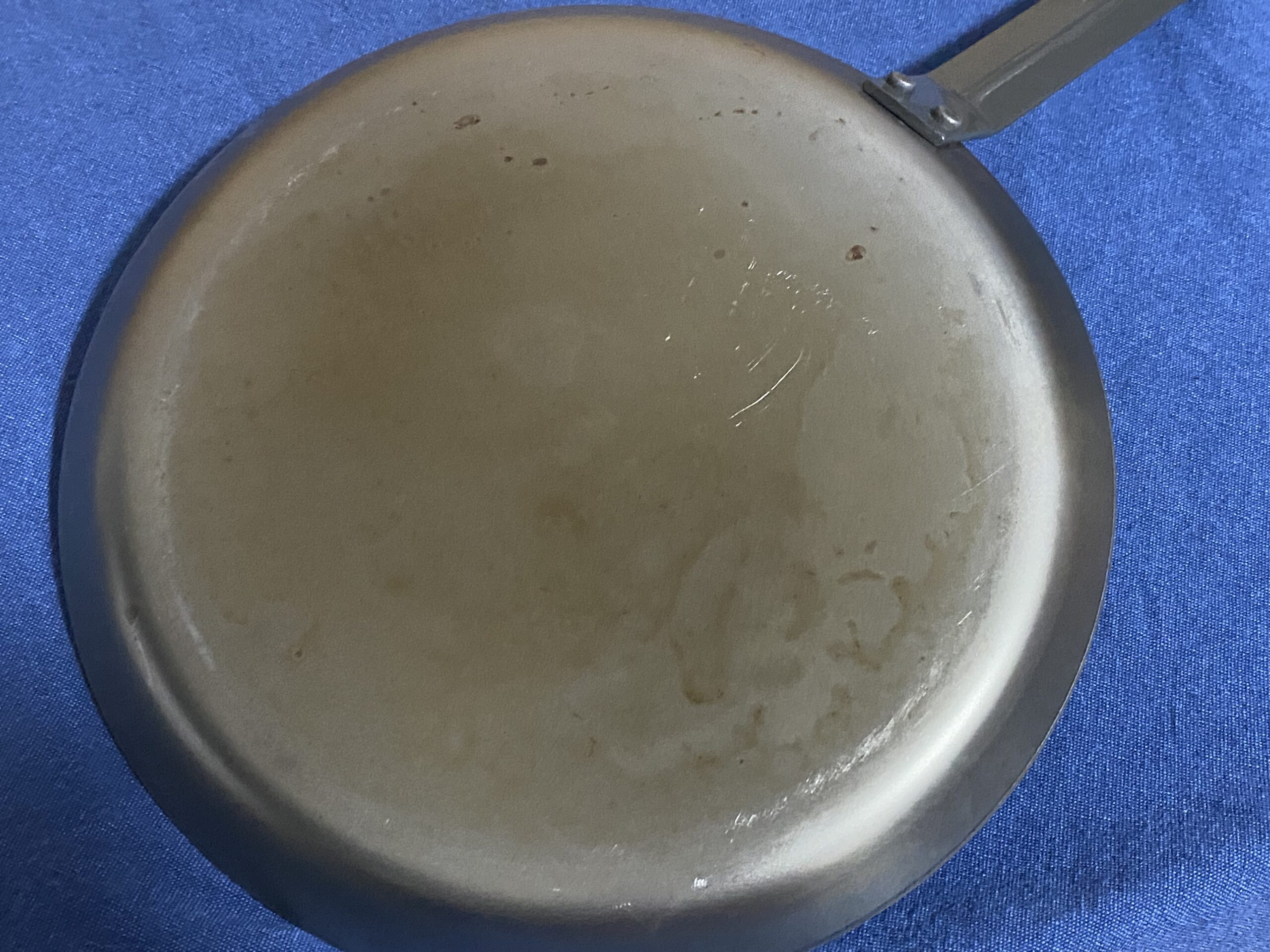
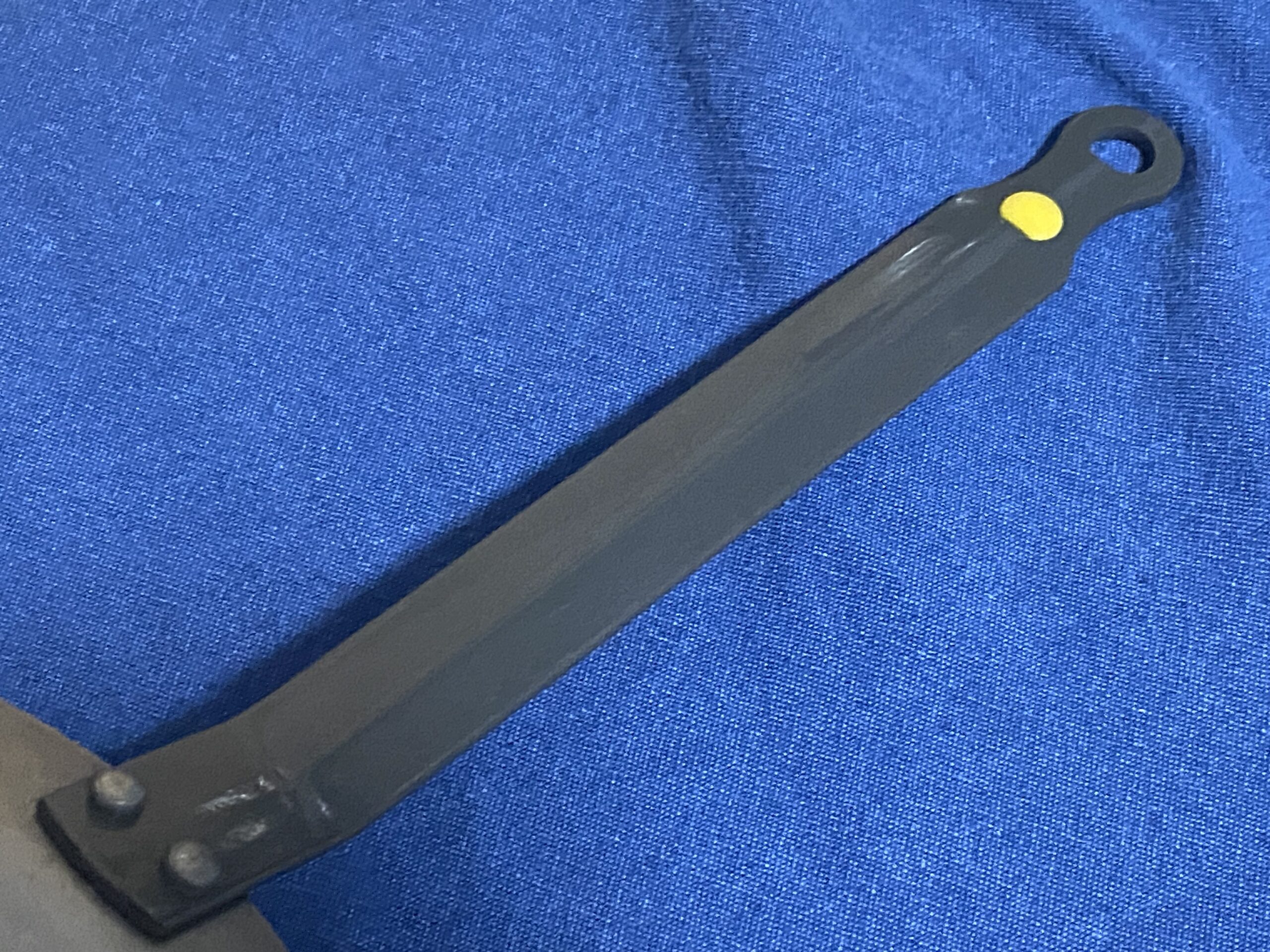
Never Miss an Important Article Again!
Join our Email List


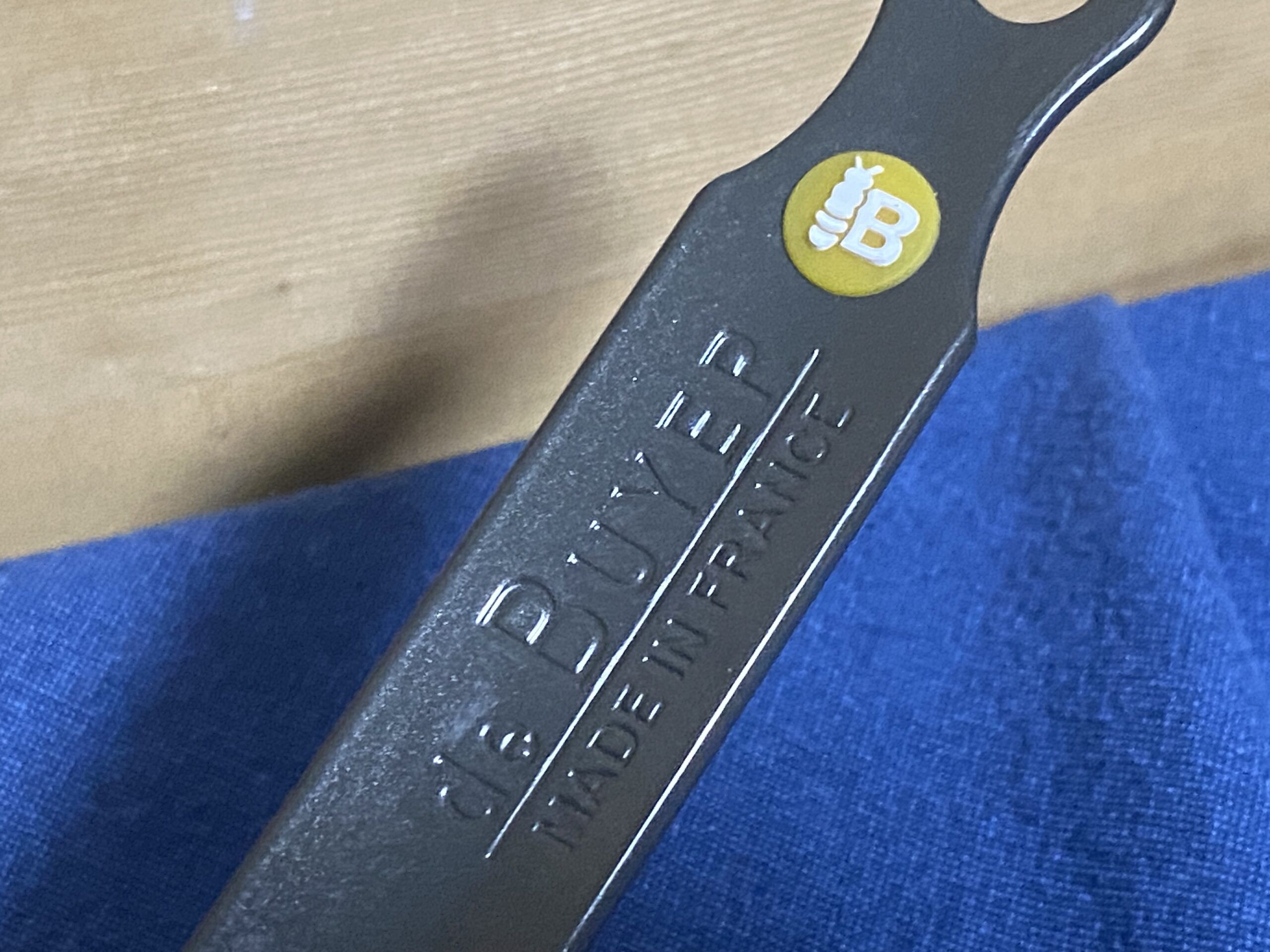
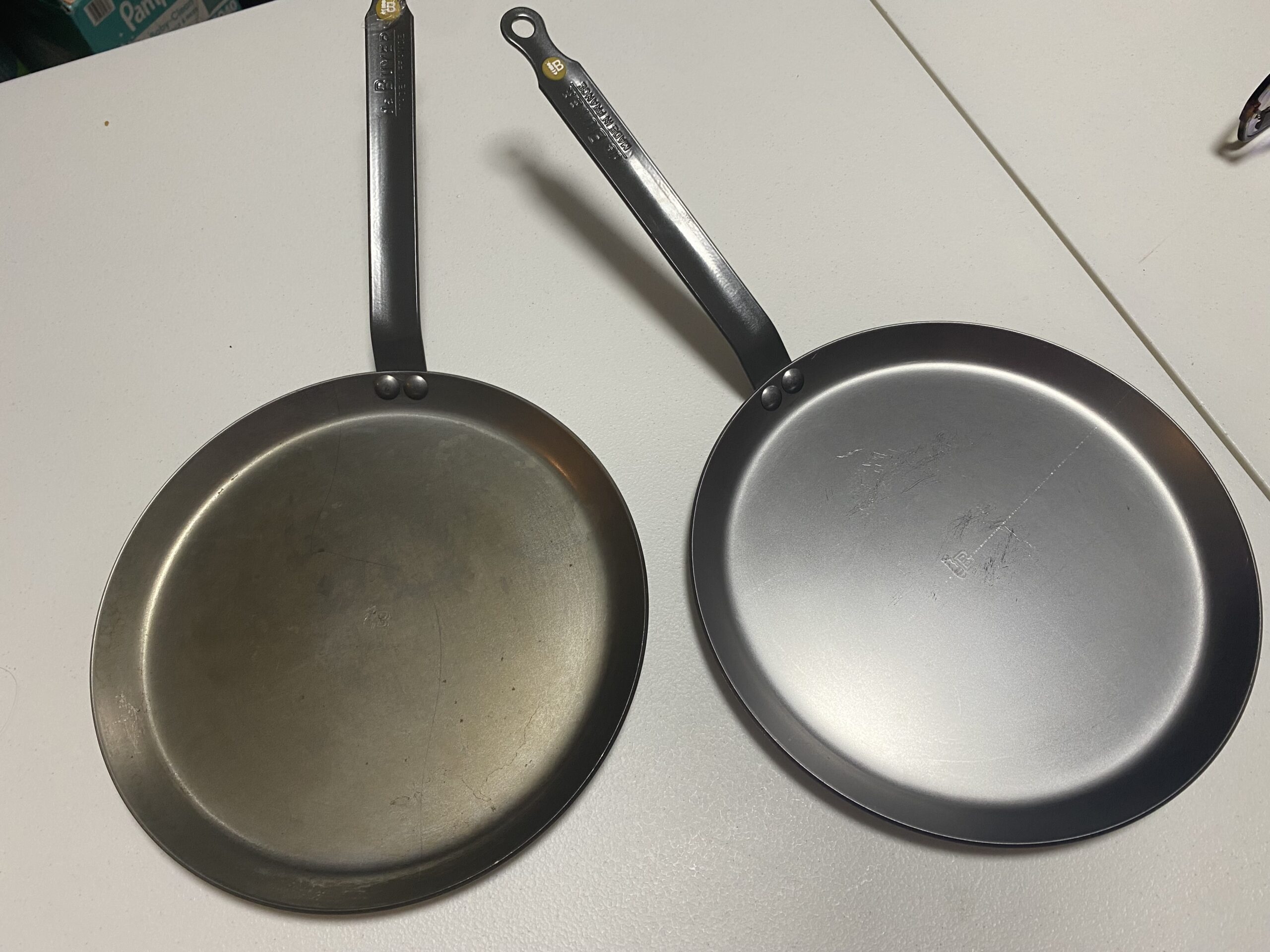






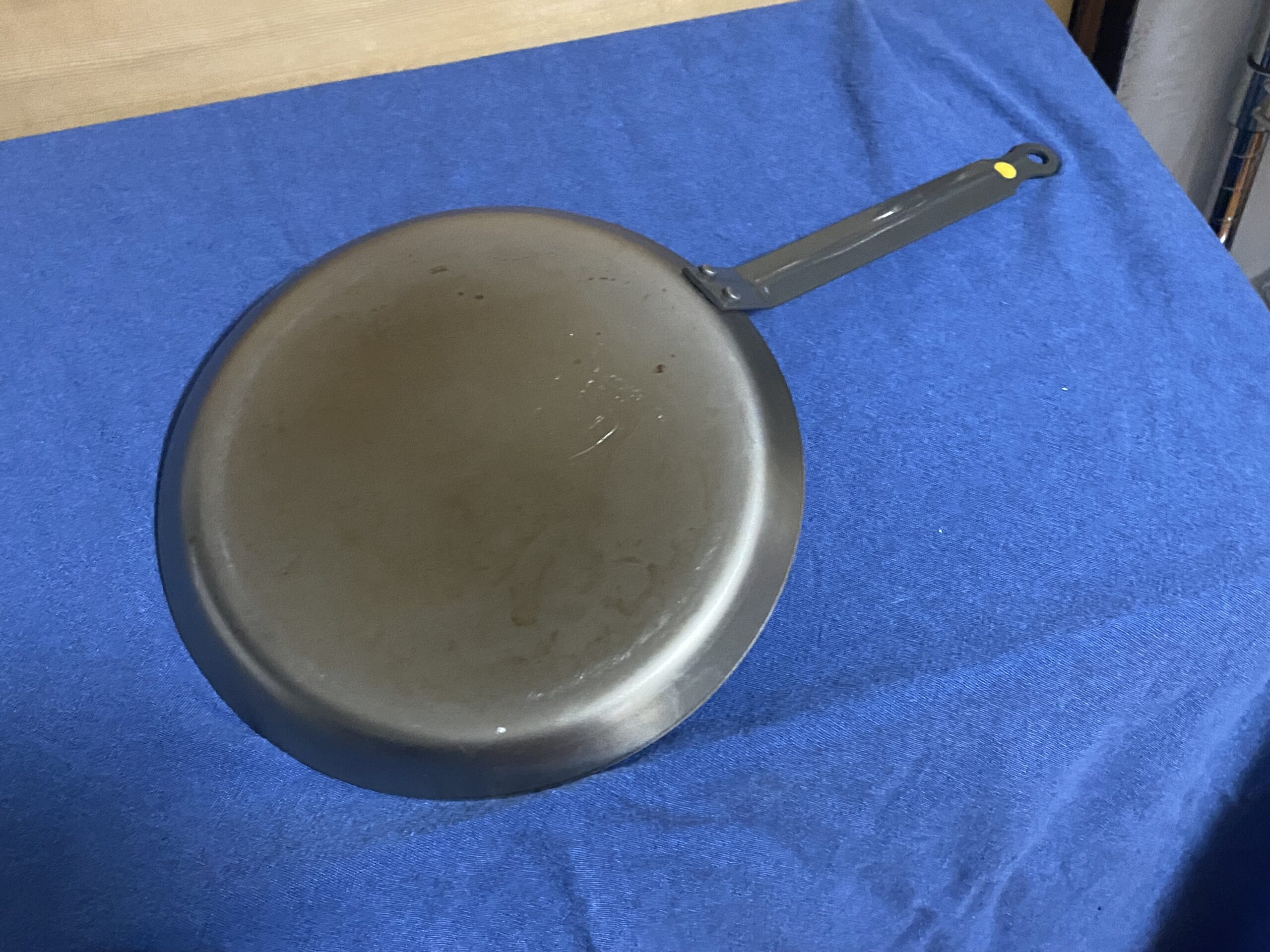

Are these carbon steel crepe pans? I have been looking for a crepe pan that doesn’t use teflon.
Yes, these are carbon steel.
How terrible is manganese? Looking at the readings of these de buyer pan they seem ok but I dont know anything about manganese and I find it difficult to find the definite answer. Would you say they are safe to use? Ive been fooled by creuset this whole time so now I have to move on to stainless steel / cast iron it sounds like and I’m finding it confusing. I do own a de buyer carbon steel pan already.
Thanks for your help
Invaluable testing – did this method involve boiling in an acidic solution for an hour for testing of the liquid?
Thanks again
What is the minimum PPM for arsenic that the XRF will detect?
This is the first test I’ve seen of carbon steel pans. Recently there have been some concerns with carbon steel pans after an agency in France issues a recall on Matfer Carbon steel pans due to arsenic and cadmium. The manufacturer has avoided questions about the PPM of Cr and As, so seeing some real numbers for a clean carbon steel pan is nice.
1 or 2 ppm.
I bought and tested the pans you mention and did not find any Cadmium or Arsenic. I have not had a chance to write up the report yet.
T
Hello Tamara! Thank you for all you do! I have 3 of those pans, just deeper size. Mineral B. About 3 years old. I love them and use them a lot.
Today I did a cotton swab test of the inside, outside and the handles. The swab turned really dark color. With the shade of purple. Not pink. Rather a very dark purple.
What do you think it might be? False-positive?
Residue from seasoning? I use olive oil, grapeseed oil and sunflower oil when cooking.
Any advice is highly appreciated! Thanks again for all your hard work!
Those test kits simply do not work, they are literally garbage unfortunately:
https://tamararubin.com/2023/01/dont-panic-these-lead-test-kits-do-not-work-for-testing-consumer-goods-you-might-as-well-tear-up-your-money-and-throw-it-in-the-trash/
Thank you so much for such a quick response! Made me feel so much better! Those are my favorite skillets! Thank you again for all your help!
Thanks for your hard work and decication!
Thank you for commenting.
My question must have gotten erased. I asked about the French pants that were recalled. M a t f e r bourgeat. Are they safe?
I am not familiar with these.
T